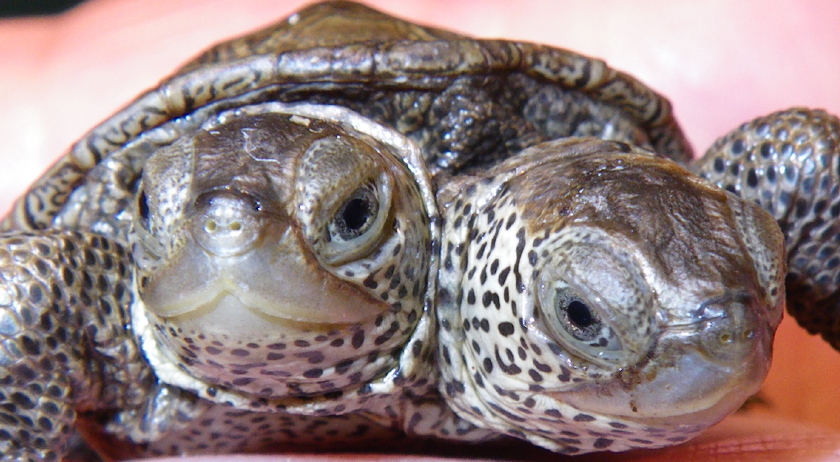
Diamondback Terrapin Siamese Twin Hatchlings
Conjoined terrapin hatchlings emerged from a nest in Eastham on the Outer Cape in August. These Siamese twins were first documented on Turtle Journal in the posting entitled “Two-Headed Diamondback Terrapin Hatchling” in late August and updated in mid-January in an article called “Two-Headed Diamondback Terrapin Update.”Â
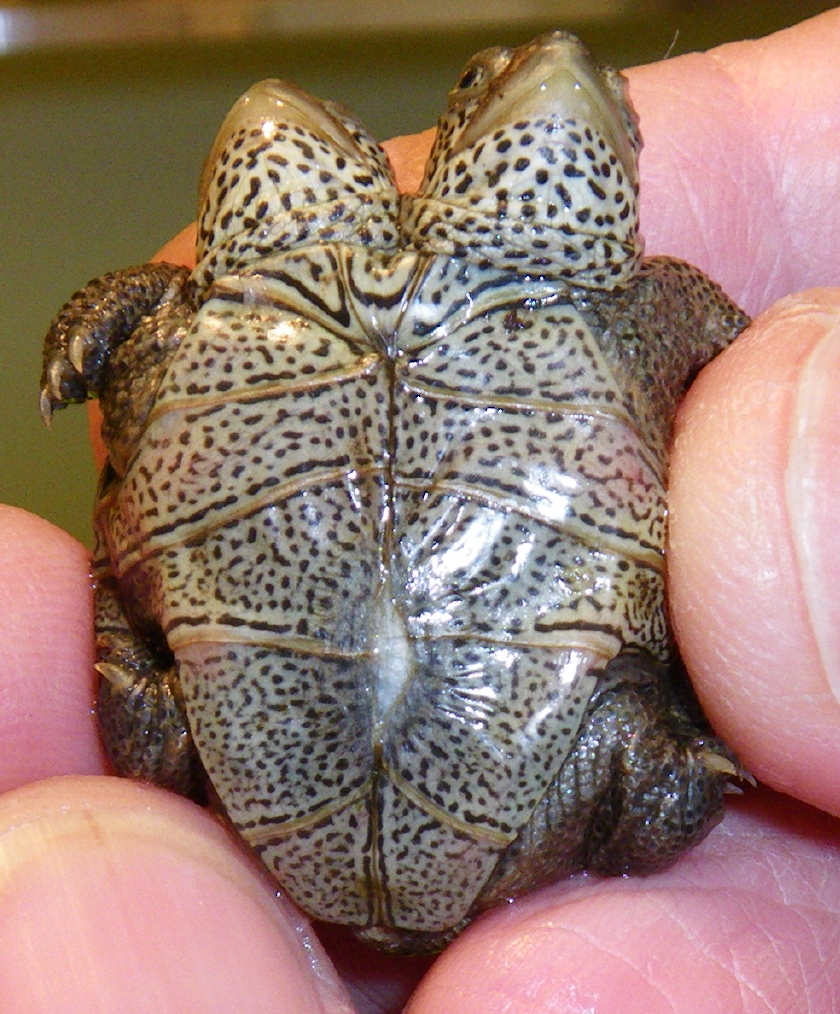
Plastron of Two-Headed Diamondback Terrapin
As noted in earlier postings, their shell appears relatively normal with an enlarged, split nuchal on the carapace and an extra, middle gular scute on the plastron. The left head seems to control the left two limbs and the right head appears to control the right two limbs. After five months, the Siamese twins had still not been documented eating, despite presented food, and their activity levels had declined. As you can observed in the image above, the yolk sac has largely been absorbed, leaving these hatchling with little energy reserve.
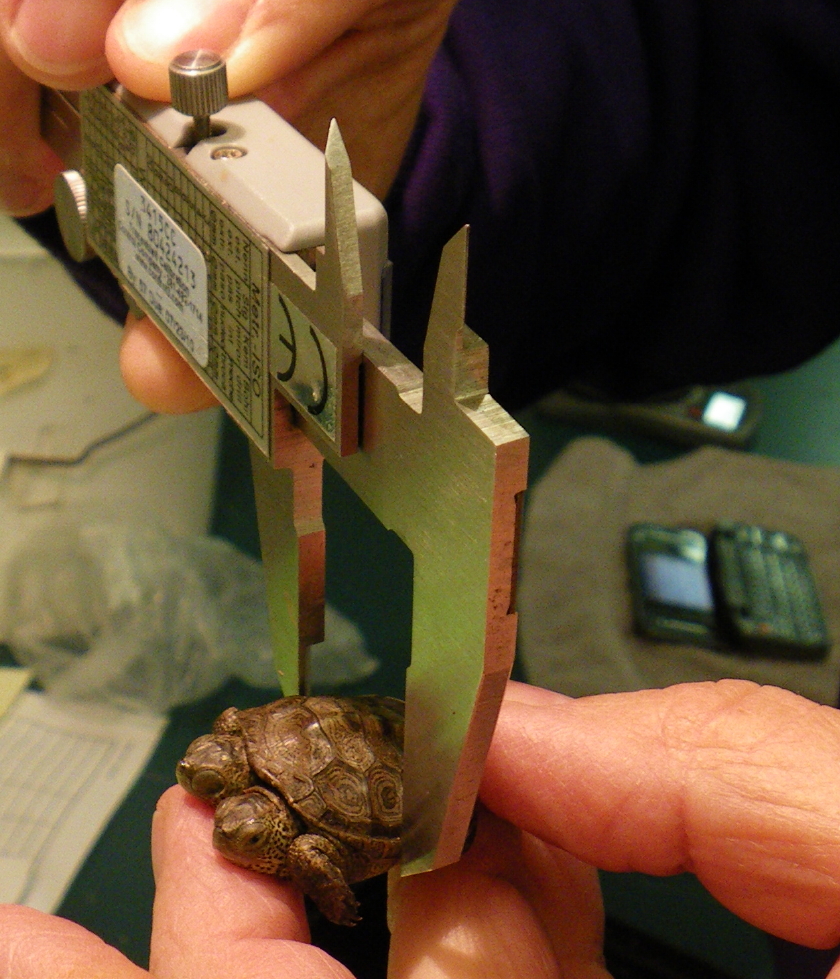
Measuring Carapace Width of Siamese Twin Terrapin Hatchlings
On February 20th, the Turtle Journal team offered to help out with a more aggressive approach to get these special critters to begin eating, to increase their activity levels and, after their viability has been established through observation and medical examination, to find them a safe, permanent home.
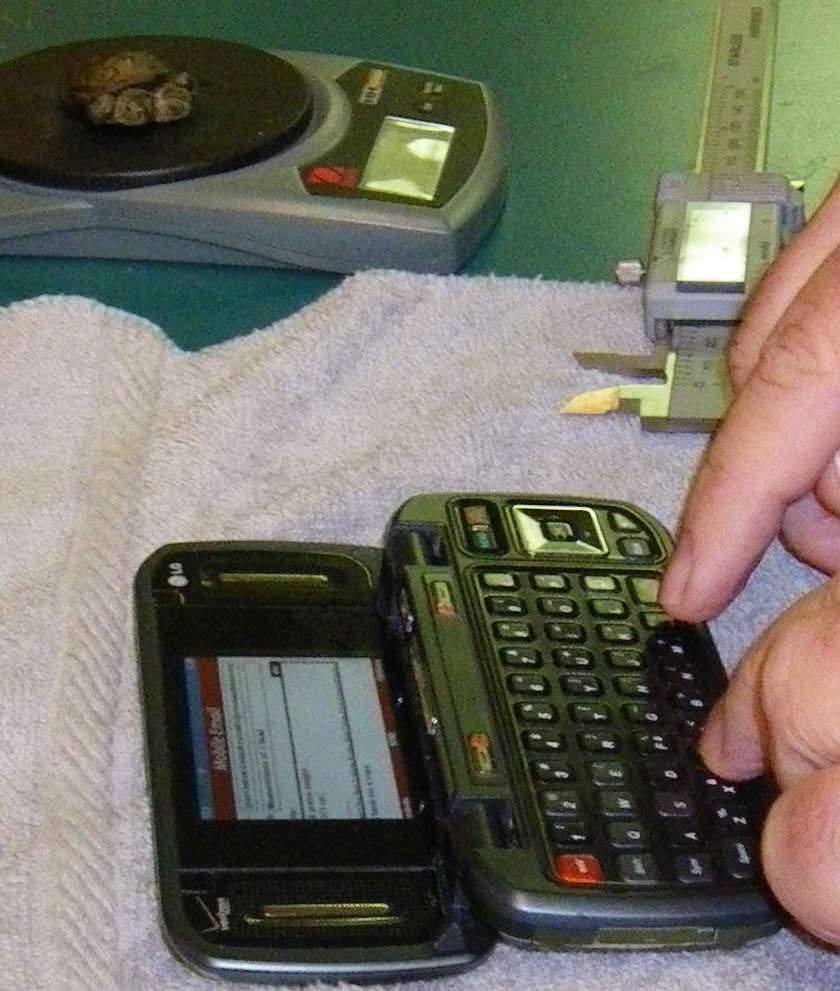
Recording Weight and Measurements of Siamese Twin Hatchlings
We recorded baseline numbers for the Siamese twins on February 20th as 5.6 grams weight, 2.573 centimeters straight-line carapace length, 2.405 centimeters carapace width, and 2.367 centimeters plastron length. We’ll use these figures to judge the success of aggressive efforts to improve their viability.
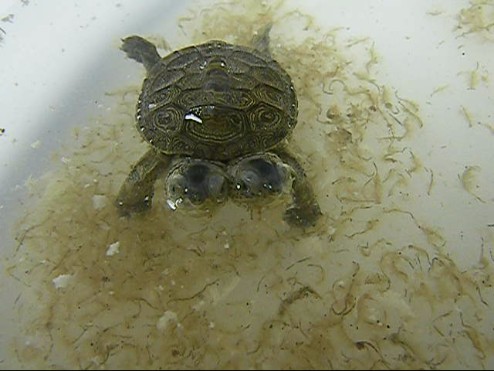
Siamese Twin Hatchlings Learning to Eat
The first step is to get the twins to eat. Easy? Nope. Unlike snapping turtles that seem to pop out of their shells with mouths agape, necks extended and voraciously hungry, diamondback terrapin hatchlings demand time and lots of patience to get started eating. The most successful formula we’ve employed involves raising the hatchlings’ body temperature to 78-to-80 degrees (F) and offering them plentiful brine shrimp for 30 minutes once a day in a separate eating container filled with about an inch of warm water.
Click Here to View Video in High Quality
Two-Headed Hatchlings Begin Eating
After rejecting offered food for 10 days, the twins began eating last night, March 3rd. The left head snagged the first brine shrimp; the right head got the hint and began munching nearby food. As typical with terrapin hatchlings, they did not immediately gorge themselves, but picked a little and rested a lot. Hopefully, their appetite will improve now that they know what those lips are supposed to be used for. Still, yesterday marked a moment of celebration. Without eating, the survivability of these precious youngsters would have been nil. Now they have a fighting chance.